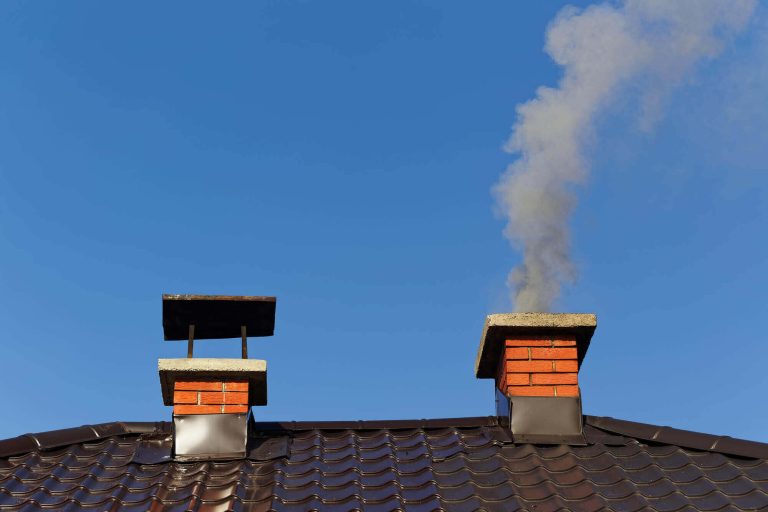Although chimneys are made to survive for many years, they might fail if not properly maintained. A chimney’s failure might pose a significant risk to public safety. A chimney can have a lot of potential issues if they are not taken care of. For example, the danger of a chimney fire and carbon monoxide poisoning rises when using a fireplace with a broken chimney.
Despite the fact that it isn’t in use, it might pose a threat to the structure or serve as a haven for poisonous black mold.
The following are the most typical chimney hazards that might harm your chimney and how to avoid them:
- Adverse weather:
Strong storms, earthquakes, and tornadoes can damage chimneys. For example, flying tree branches because of storms or tornadoes might damage the chimney. Wind-borne debris such as leaves, branches, mud, and other objects can accumulate for an extended time and pose serious risks to the chimney. In addition, there’s a chance that an earthquake will break or split the stonework. You may reduce the quantity of chilly air that enters the chimney by simply ensuring the vent is closed when the chimney isn’t in use, and that rainwater is kept out when it rains.
Since chimneys are frequently warm and humid, microorganisms thrive there. These germs can contaminate the air inside your home and give you and your family unpleasant respiratory ailments which are provided by the Costco HVAC. Additionally, chimney covers can lessen moisture and stop microbial growth, and routine cleaning can get rid of spores before they spread.
It is a wise idea to visually inspect the outside of your chimney after adverse weather. Additionally, have your chimney regularly inspected by professionals. For example, I live in Seattle, and I prefer calling value chimney services in Seattle to get my chimney inspection done as soon as I see any signs of damage. Smaller damages should be repaired as soon as possible to prevent further damage and other issues.
- Water intrusion:
Water intrusion into a chimney system can result in significant harm. Masonry gets older due to water. Rust can develop in the dampers or furnace if water gets into the chimney. The tile liner being damaged is another issue that dampness may lead to. Bricks and mortar get cracked and broken when water that has crept into the mortar freezes. Spalling is the name for this. The chimney’s internal structure might be lost if the damage is not corrected. The flue should always be fixed once it develops a crack, but if moisture gets into the gaps, it can also harm the walls and ceilings.
You may take a lot of precautions to keep water from harming your chimney. One of the greatest methods to stop spalling is to have the brickwork waterproofed and sealed. Installing a chimney cover will shield the flue from water damage and mold growth by blocking rain and snow from pouring down the chimney.
However, since not all damage is immediately apparent, a thorough chimney examination should be performed to ascertain the extent of the water damage and if there is enough moisture to cause rusting.
- Carelessness:
The most common reason for chimney failure is carelessness. Allowing a period of time between chimney inspections increases the possibility that minor damage will develop into a serious issue. Minor chimney damage, such as cracked crowns or broken flue tiles following a small chimney fire, frequently goes undiscovered. These issues may become worse and cost more money to resolve if they are not resolved right away. In addition, the mortar separating the bricks on the chimney might become damaged by frequent freezing and thawing cycles. Bricks deteriorate due to damaged mortar, which can result in wider fissures.
To repair the mortar damage brought on by moisture, use fresh mortar. A good approach is tuckpointing, which is done so that the restored region mixes in with unimportant surrounding parts. The procedure also assures that the bricks’ joints are sturdy and water-resistant, averting the need for exorbitant future repairs.
Summary:
For your health and safety, maintaining your chimney is essential. However, the greatest way to lower your risk is to schedule annual cleanings and inspections because chimney dangers frequently arise when the fixture has been neglected for a long time.
In general, it’s better to leave chimney maintenance to the pros. However, you can contribute to maintaining the functionality of your chimney by being alert to any obstructions and leaks, having it routinely inspected by a professional, and, if you have a fireplace, building fires safely.

